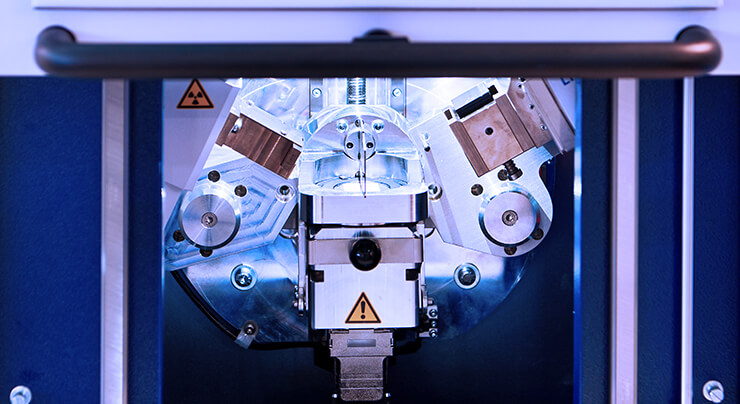
Different phases of materials have different benefits to their performance in a specific application. These phases form from the relationship of how atoms in a material stack together and even the same chemistry can present as different phases under different conditions of heat treatment or in different environments!
Examining a material’s phase requires special testing beyond analytical chemistry or mechanical testing.
X-ray diffraction (XRD) leverages the phenomenon of diffraction to detect the phases present in a material of interest. A diffraction pattern is created by rotating the X-ray source and detector around the sample, which produces a continuous diffraction intensity over a range of angles of incidence. This diffraction pattern will have strong peaks at certain angles of incidence related to the way the atoms stack in the sample of interest. These patterns can be compared to know standard patterns for a wide range of crystalline materials in order to determine what phase and material that sample is!
NSL Analytical provides phase identification through XRD as a standard offering to our customers. Combined with other techniques like analytical chemistry, XRD provides our customers with accurate, in-depth knowledge of the materials they manage.
This year marks a significant achievement for NSL
The nuclear power industry relies heavily on materials